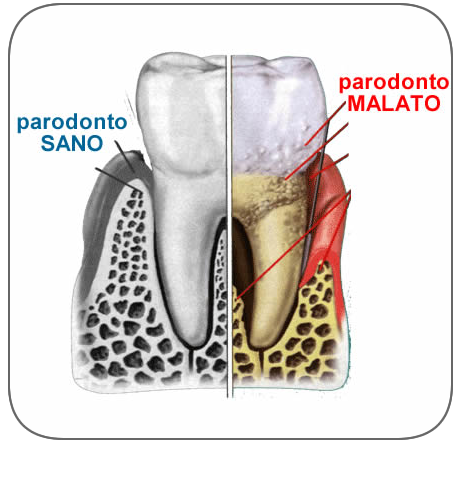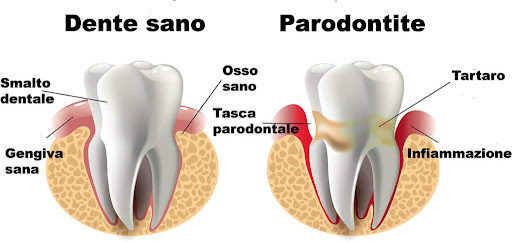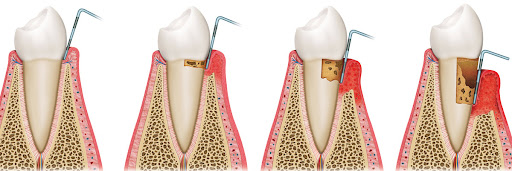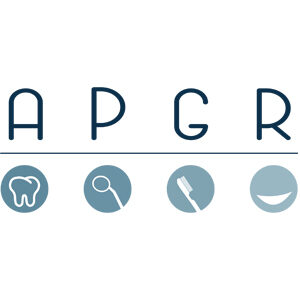Periodontology
Periodontology is the branch of dentistry that prevents and treats all conditions affecting the periodontium, encompassing both soft tissues (gingiva and periodontal ligament) and hard tissues (root cementum and bone tissue) that contribute to the structure and stability of teeth.
Its primary mission is to prevent and maintain the health of periodontal tissues while restoring their function and aesthetics.
How do periodontal diseases develop?
When bacterial plaque builds up, we get exposed to the risk of developing a real infection.
Generally, the inflammatory process affects the tooth-supporting apparatus. If it only involves the gum, we would be dealing with gingivitis. However, if the inflammation also affects the underlying structures, we would be talking about periodontitis, a condition that may lead to tooth loss if not adequately treated. It can be associated with other chronic systemic diseases, such as diabetes and cardiovascular diseases.
The treatment involves the dentist, hygienist and patient and consists of removing the infection’s cause, correcting periodontal lesions and pockets, and enabling the patient to prevent future episodes.
- The treatment: starts with an accurate diagnosis. During this stage, we measure periodontal pockets through a periodontal survey and a comprehensive intraoral radiographic examination. Then, we carry out a professional cleaning session, including tartar ablation and root planing.
- Surgical treatment: becomes necessary for severe bone injuries, requiring a direct view of the defect and the application of regenerative techniques to ensure healing.
- Maintenance therapy: Maintenance sessions must be repeated regularly to ensure the treatment’s success. During these sessions, the dentist carries out professional cleaning, checks the gums’ health and conducts a survey to detect any issues.
Maintaining good oral hygiene at home and addressing potentially harmful factors (such as smoking) is essential to ensure the success of all these treatments. That’s why we instruct our patients on how to use the toothbrush, floss, and dental brushes during every session.
All periodontal treatments can be carried out under conscious sedation, which makes the patient’s experience comfortable and peaceful.
Questions
Periodontitis exhibits distinct signs that facilitate an accurate diagnosis, including redness, swelling, and pain at the gum level, bleeding during brushing and flossing, as well as gum recession and tooth mobility.
Periodontitis has a hereditary component. It correlates with risk factors like smoking and can be aggravated by hormonal changes, such as those occurring during pregnancy.
Oral health is strictly connected to glycaemic control. People with uncontrolled diabetes are exposed to a higher risk of infection with abnormal wound healing and an increased likelihood of developing periodontitis and cardiovascular diseases. That’s why we recommend regular check-ups with your dentist.




